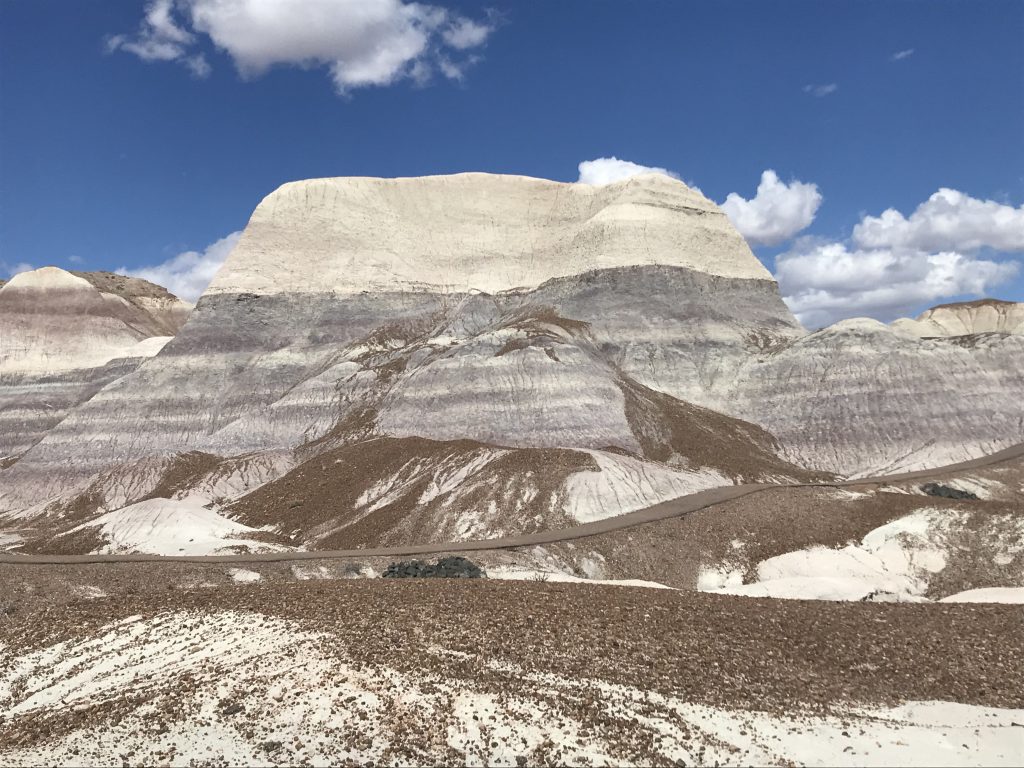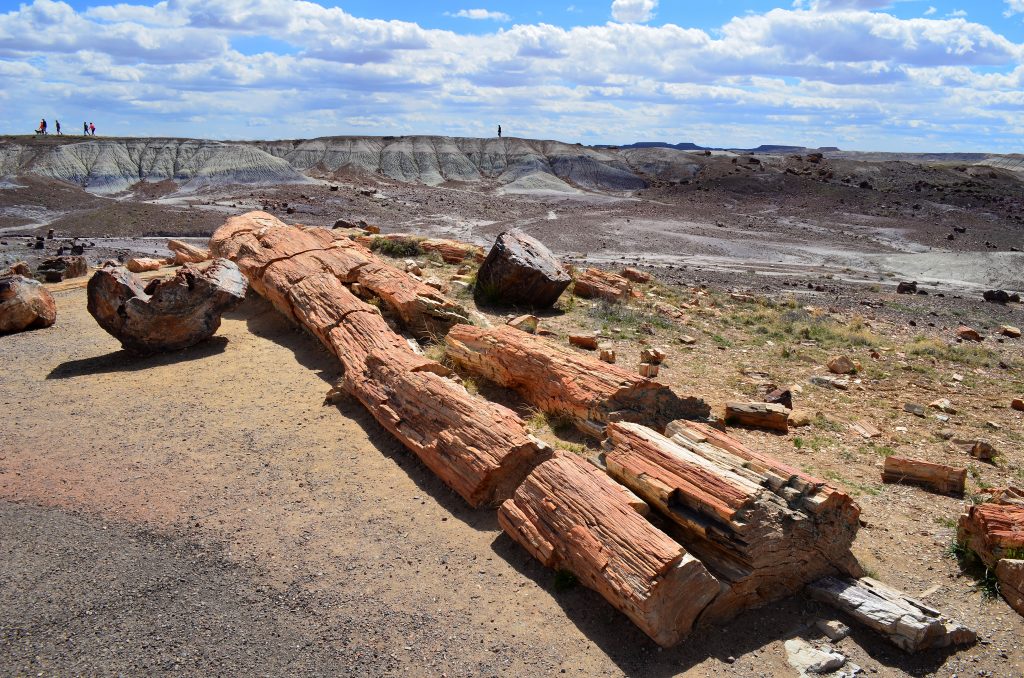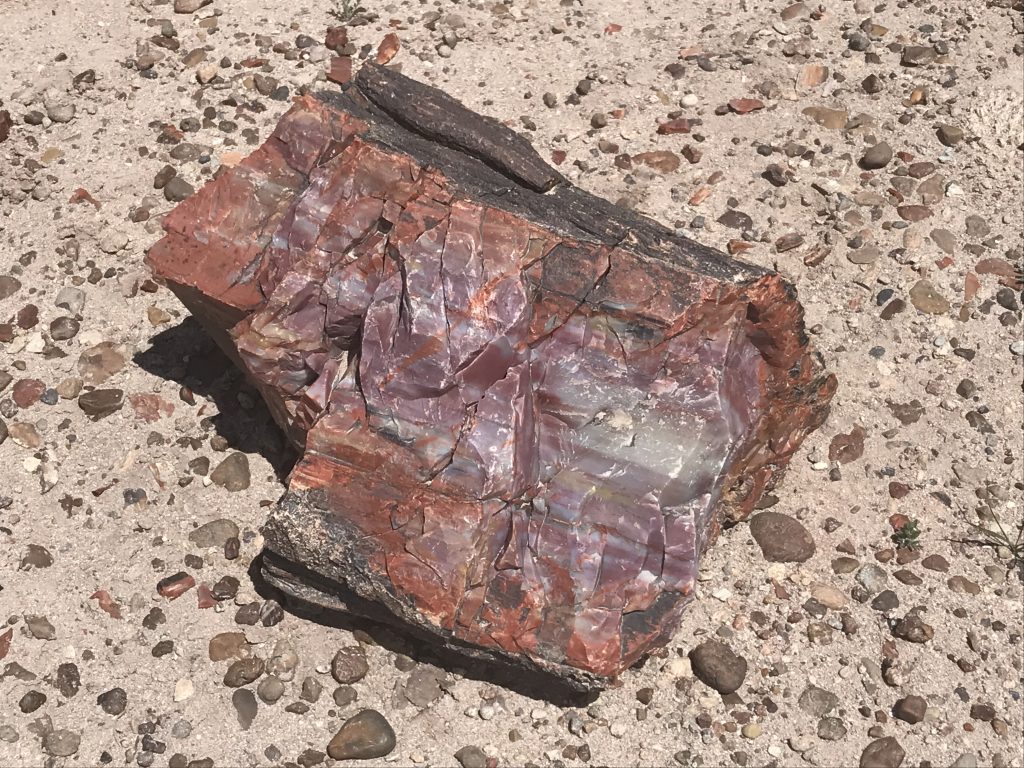People mistakenly interchange the Painted Desert and the Petrified Forest. However, the Painted Desert is just one part of Petrified Forest National Park in Arizona. Located at the northern end of the park just off I-40, visitors can see the pinks, oranges and red hues of the Chinle Formations for miles.
Even though it encompasses 218,000 acres, the park doesn’t offer lodging. In fact, the park closes nightly so plan your visit accordingly. Most visitors exit I-40 (Exit 311) and only tour the Painted Desert area. However, you can take the 28-mile Park Road to see the Blue Mesa area and the concentration of petrified logs closer to the southern entrance. Two visitor centers offering refreshments, bathrooms and information flank both ends of the park.
Tawa Point & Rim Trail
One of the first overlooks past the 1960’s era visitor center is Tawa Point. Similar to the Grand Canyon, words can’t adequately describe the site -except that it looks “painted” with vibrant pink hues especially when reflecting the late afternoon sun.
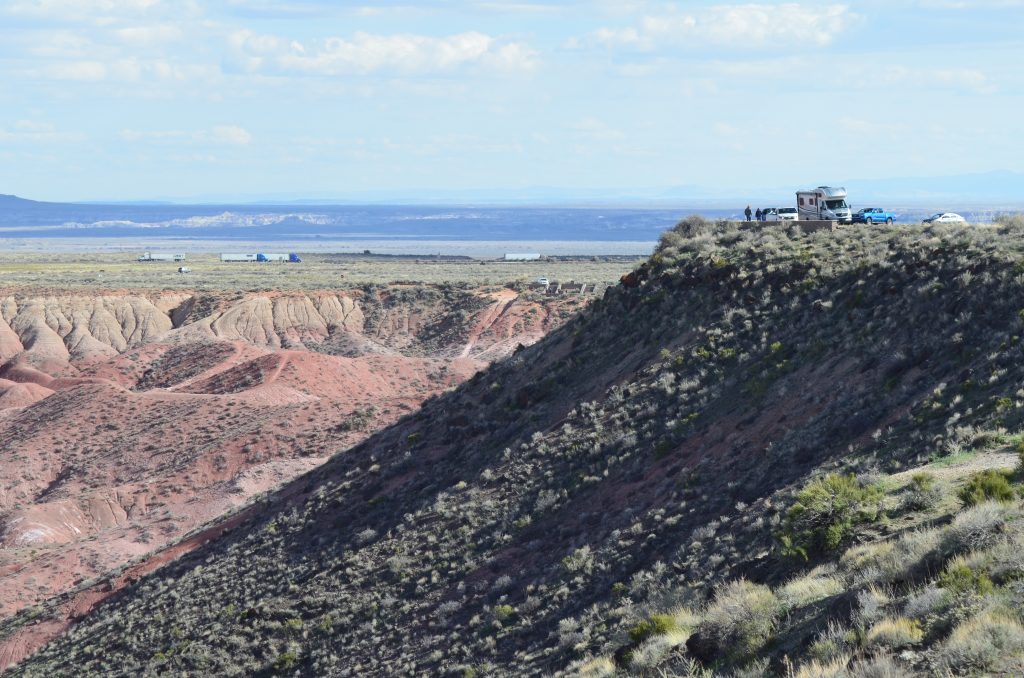
What causes the beautiful pink colors? Here it is in simplistic terms. Over 220 million years ago, this land was a lush forest with rivers. As these rivers flowed for millions of years, deposits of sandstone, siltstone and mudstone were left behind. Some of these deposits contain iron and manganese which turn reddish when exposed to oxygen. Since these sediment layers occurred thousands of years apart, the colors can be different shades forming stripes or bands.
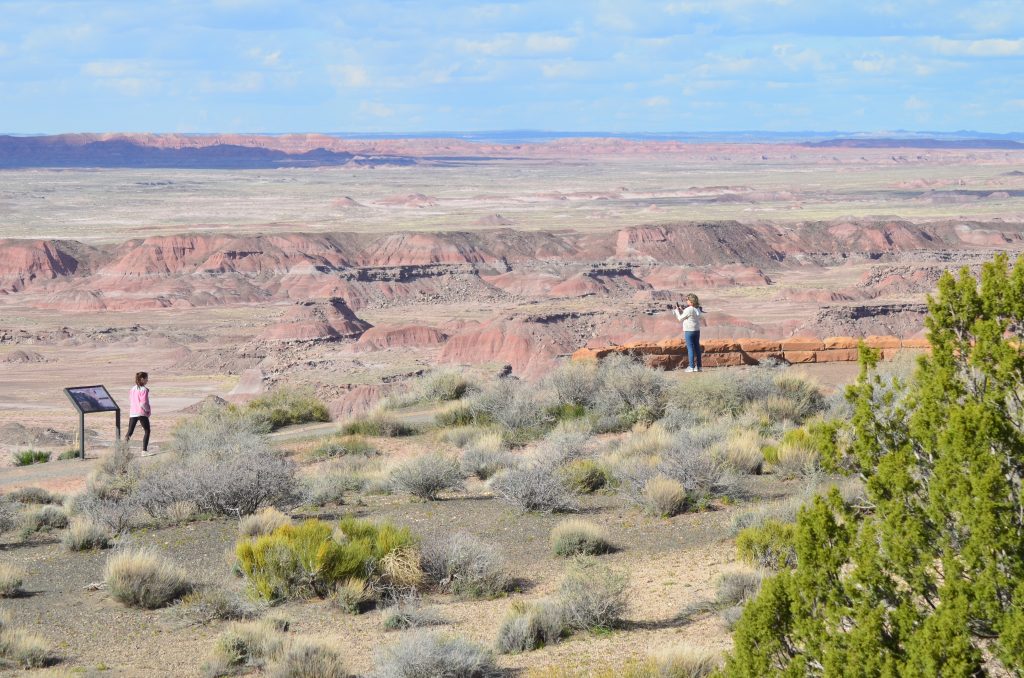
From here you can take the 1-mile Rim Trail, which I highly recommend. Just like it sounds, the trail follows the rim and stays relatively flat. You don’t even have to take it the full length but just to the next stop.
Painted Desert Inn
I mentioned that lodging isn’t available in the park – so what’s with Painted Desert Inn?
Originally built in 1924 by a homesteader named Herbert Lore, the Painted Desert wasn’t part of Petrified Forest NP. That didn’t come about until 1936 when Lore sold his inn and land to the NPS.
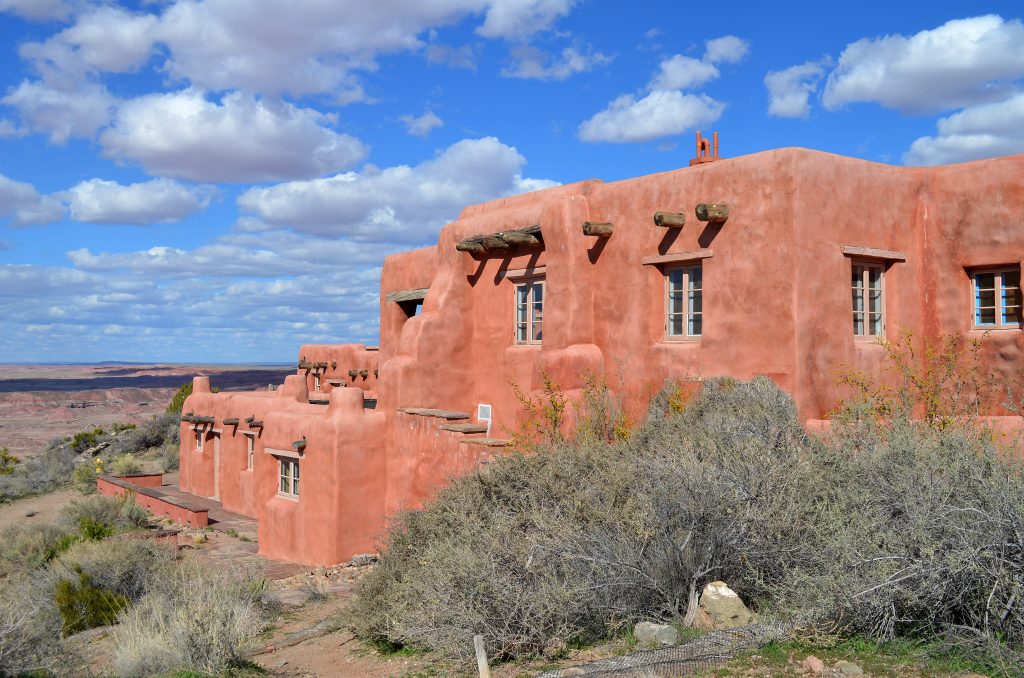
Constructed out of petrified wood, the remote inn was nicknamed Stone Tree House and offered only six lodging rooms on the 2nd floor. By the time he sold it to the NPS, the unstable benzonite clay foundation began to cause structural damage
Former park ranger Lyle Bennett, by then an NPS architect, designed the new inn in the “Pueblo Revival” style he was known for. With the work of the CCC, the inn opened in 1940, but closed again in 1942 due to WWII.
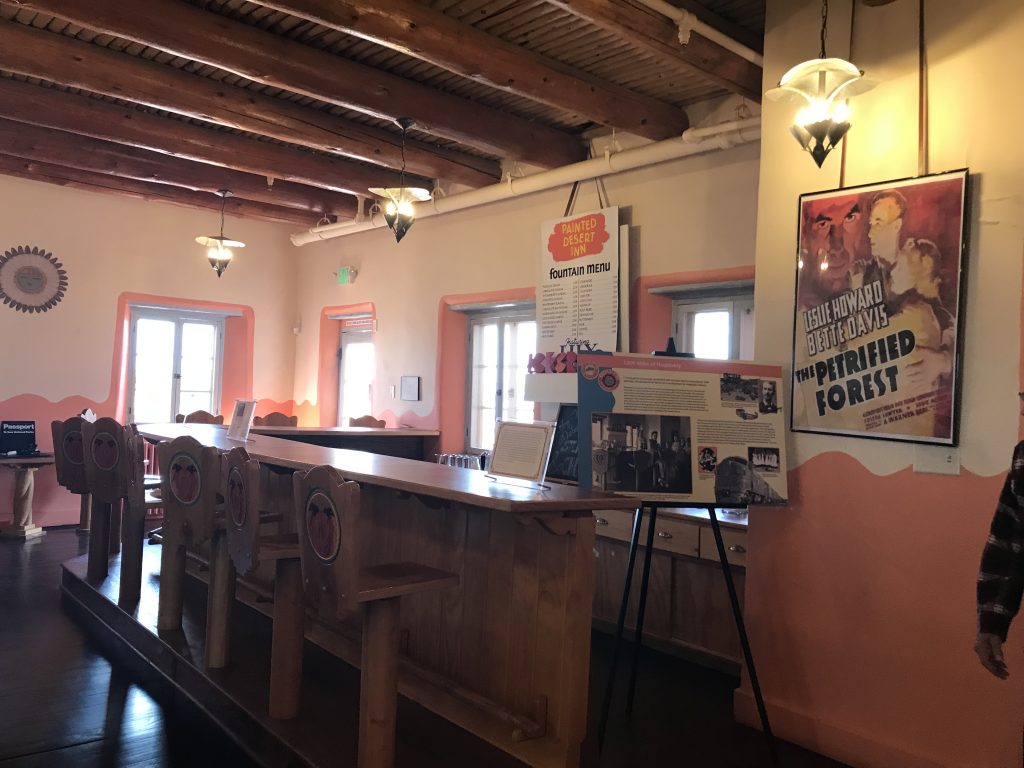
The hey-day of the inn occurred from the late 1940’s to 1963 when the Fred Harvey Company managed the property. Most visitors came here for the restaurant and gift shop, although it offered 6 motel-style rooms. Once again, structural problems from the benzonite clay forced the closure of the inn and the park decided to demolish the structure.
Thankfully in 1987 the inn received National Landmark status. After another renovation in the mid-2000’s, the inn opened as a museum and bookstore.
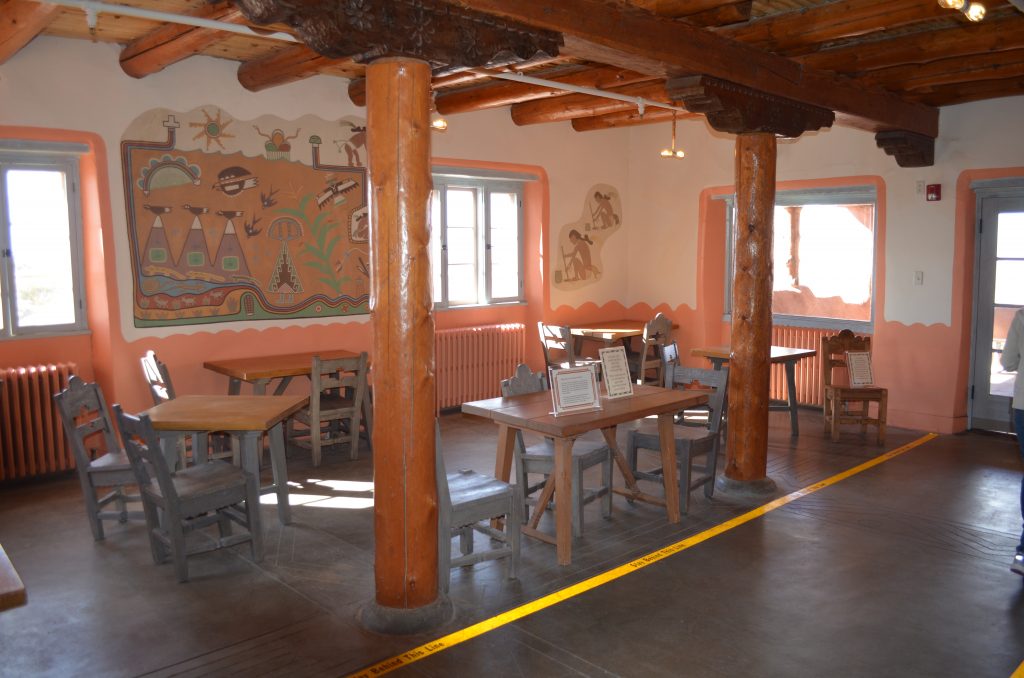
Overlooks
Heading south, a series of overlooks: Chinde, Pintado, Nizhoni, Whipple and Lacey Points offer spectacular views.
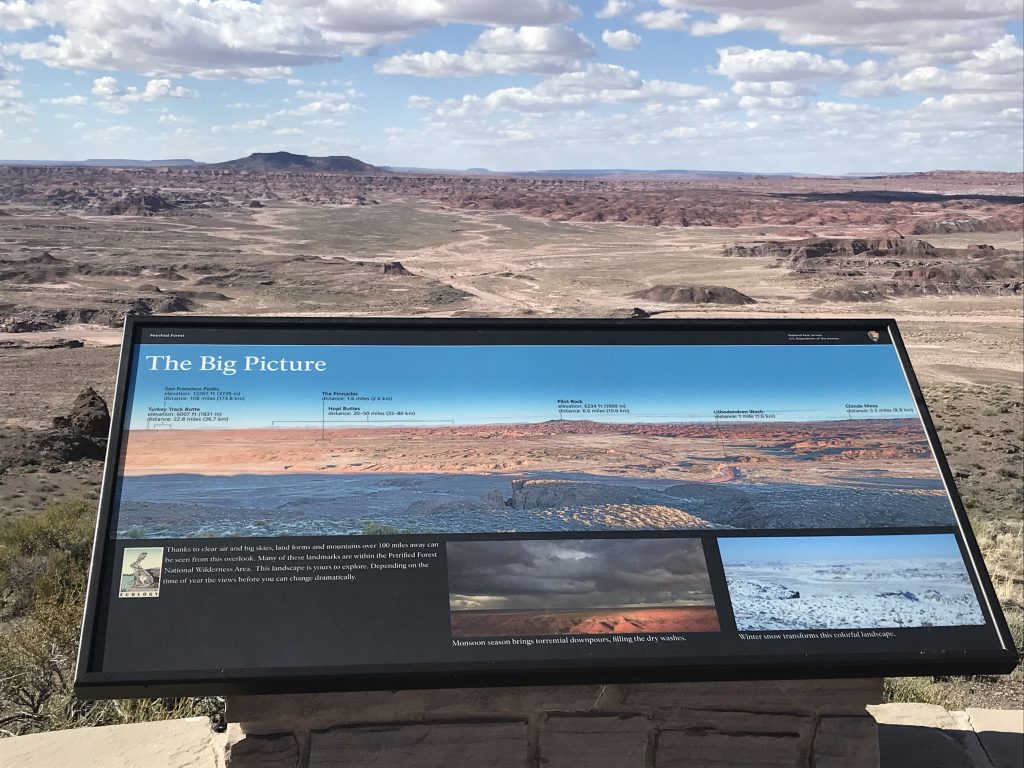
At Pintado Point, a helpful plaque shows what we were looking at. On a clear day, visitors can see the San Francisco Peaks over 100 miles away!
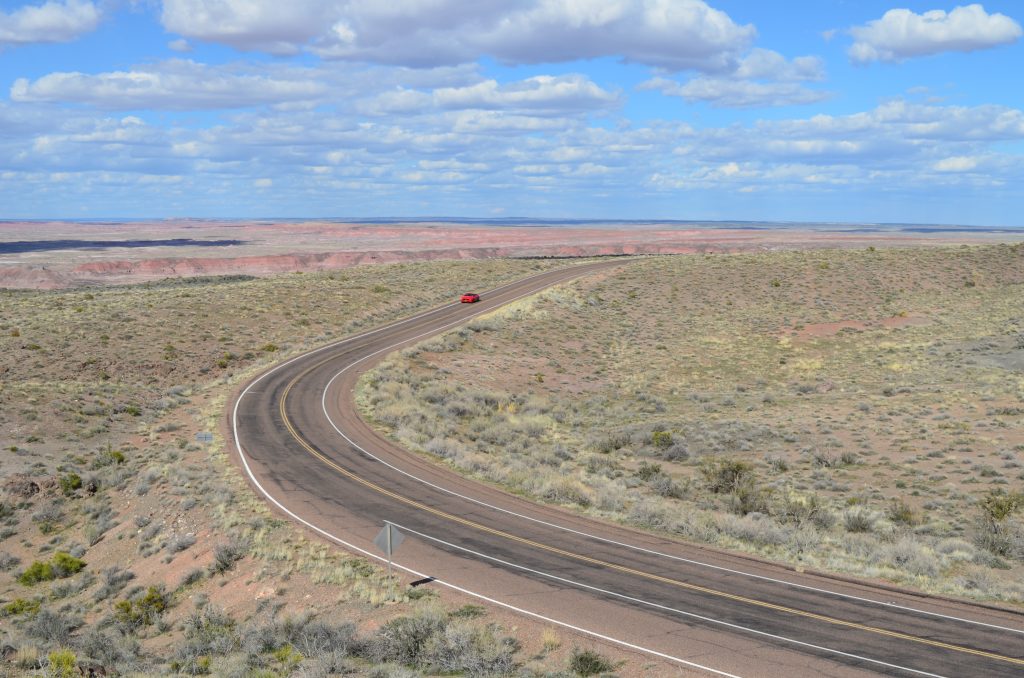
As you head south, the terrain begins to change.
Route 66
Old Route 66 represented the epitome of automobile travel across the desert Southwest for many years before the government decommissioned it in 1985. Surprisingly, Petrified Forest NP is the only national park that “America’s Highway” traversed. To pay homage, a rusted out 1932 Studebaker sits in a pullout. A historical plaque details more of the road’s history and visitors can see the telephone poles flanking the original roadbed.

The Southern Section of Petrified Forest NP
The Painted Desert encompasses less than half of Petrified Forest NP. If time allows, continue south on Park Road to see Puerco Pueblo, Blue Mesa and a concentration of petrified logs in the Crystal and Rainbow Forest areas. The scenery changes dramatically and you’ll feel you’re in a different park. If not, simply turn around and backtrack to the Painted Desert Visitor Center and park exit.

Blue Mesa 
Crystal Forest 
Petrified Wood
For more information about the Painted Desert and Petrified Forest NP, click here. Also, see the blog post about our trip to the southern end of Petrified Forest NP.

